Design of Experiments May Be Used With Discrete
When I arrive at the Abso Lutely headquarters in Glendale, California, a Miley-aged assistant leads me to a desk near Tim Heidecker and Eric Wareheim's offices, discloses the Wi-Fi password, and leaves me alone. Staring right at me is a child mannequin wearing a ginger, Amish-length beard. Considering all the grotesque costumes they have worn on TV–the Lollipop Guild–meets–Las Vegas look of their "Chrimbus" special comes to mind–it's almost jarring when the duo emerge in button-down shirts and jeans. It's as if they've exorcised the demented parts of themselves in small, televised doses.
Heidecker and Wareheim, comedians and TV producers who rose to fame with their 2007–2010 series Tim and Eric Awesome Show, Great Job! on Cartoon Network's Adult Swim, lead me into an editing bay upstairs where they're putting the finishing touches on their new show, Tim and Eric's Bedtime Stories. Wareheim, 38, is tall, neatly hirsute, and radiating excitement. Heidecker, also 38, is shorter, but equally imposing. He's laconic in describing what I'm about to watch, but I can feel him looking to see how I'll react. On screen, Bob Odenkirk (best known for playing crooked lawyer Saul Goodman on Breaking Bad) is a podiatrist, snipping off a woman's toes with shiny metal shears. The scene plays like a horror movie about malpractice, but the disconnect between Odenkirk's loud, effortful surgery and his patient's almost Zen-like calm cracks me up. Heidecker and Wareheim crack up too.
Read more
Pop-Up Parks Make Cities Friendlier
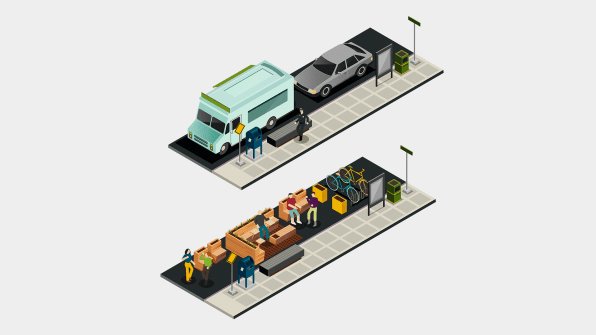
Pop-Up Parks Make Cities Friendlier
People St
LADoT
Creating pedestrian walking and seating zones along city roads usually requires navigating a bureaucratic labyrinth. The Los Angeles Department of Transportation's "kits" for pedestrian plazas, mini parks, and bike racks–developed along with community groups–contain an application, templates for community support petitions, pre-approved design configurations, and a materials list. The first projects were approved in July and are being rolled out now.
Cardboard Boxes That Can Practically Assemble Themselves
Cardboard Boxes That Can Practically Assemble Themselves
Rapid Packing Container
Cooper Union
Cooper Union undergrads Chris Curro and Henry Wang entered the school's inaugural Invention Factory competition in 2013 with a mission: make the cardboard box better. Their winning design had several noteworthy features. One-handed assembly: Position a flattened box atop a wooden frame and push down–the box's flaps fold themselves. An adhesive strip seals the top. Less waste: With a rethought cut-and-crease pattern, Curro and Wang's design uses 15% less material than a traditional box. Simple storage: Pull a flap on the lid and the box once again becomes a flat piece of cardboard, easy to store and reuse.
W Hotels Are Going Keyless
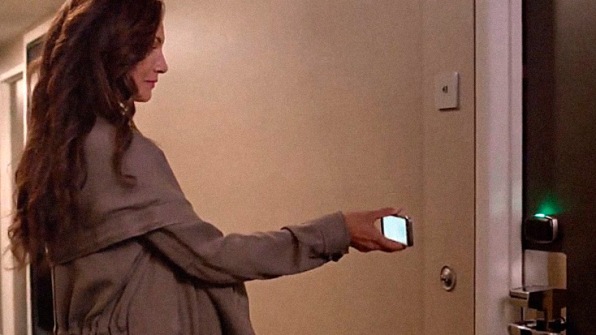
W Hotels Are Going Keyless
SPG App
Starwood Hotels
After decades of homogenization in the hotel industry, "our focus is on bringing personalization back into the hospitality experience," says Starwood SVP Chris Holdren. The SPG App (referring to the company's "Starwood Preferred Guest" program) lets users check in while still at the airport or in the car and features a mobile check-in system. You arrive, get your room number via the app, and receive a Bluetooth "key" to open the door–no lines or swipe cards. Keyless entry is already available at the Aloft hotels in Harlem, New York, and Cupertino, and will roll out globally in Aloft, Element, and W hotels this fall.
Digital Becomes Physical
Digital Becomes Physical
These gesture-control devices put the virtual world at your fingertips
inForm
MIT Media Lab
Good news for business travelers: Someday, you may be able to give your kids a fist bump from the other side of the world. Researchers at the Tangible Media Group at MIT are conducting experiments that could make it possible for us to actually handle, shape, and manipulate physical objects, even when we're far away.
Here's how inForm works: Imagine yourself standing in a room in front of a Microsoft Kinect and a video monitor. As you move your hands, the Kinect sends the image to a computer, which is linked to inForm, shown above. The computer controls an array of 900 plastic pins atop the waist-high table, moving them up and down dozens of times per second in such a way that the surface itself mimics the action of your hands. InForm can credibly represent basic shapes, and your son could even bump you back by pressing his fist against the pins while you watch him on a video monitor.
It's too early to speculate as to what a commercial version of inForm might look like, but as the resolution improves and as different technologies are incorporated, future versions might well be able to render more complicated shapes, such as architectural models.
Aireal
Disney Research
"The sensation is quite pleasant," is how Google's Ivan Poupyrev describes the Aireal, a device he helped develop at Disney Research that fires puffs of air to trick you into sensing phantom objects. Via motion-tracking software and precisely timed
swirls of air that collapse when they hit your skin, the Aireal can make you feel a butterfly sitting on your hand or a flock of birds flying past your ear–an accessible system that could make virtual experiences material for everyone.
SpaceTop
Microsoft
Like inForm, SpaceTop is being developed at the MIT Media Lab, though it was created by engineers at Microsoft. Most of the
time, it works just like a regular monitor, but put your hands behind SpaceTop's transparent screen and suddenly, through motion-tracking software, you're able to manipulate 3-D models as though they were physical objects. To exit cyberspace and go back to Windows, all you have to do is pull your hands back to the keyboard.
Better Navigation Makes Better Cities
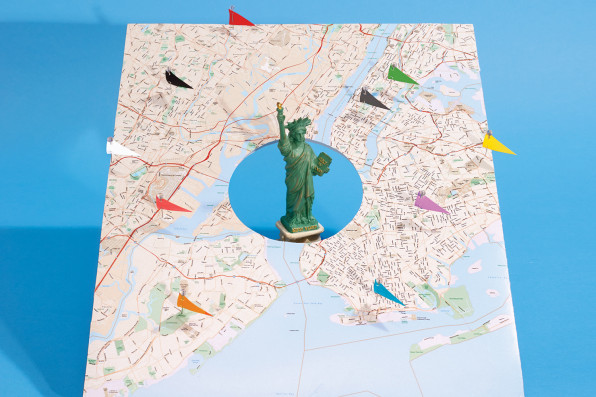
Better Navigation Makes Better Cities
New Wayfinding Tools Change How You Get Around
iBeacon
Apple
A new feature on Apple mobile devices that delivers location-based information to users automatically.
How it works: A discreet transmitter sends out a Bluetooth signal, which apps with iBeacon pick up. When you approach a transmitter location, you're pinged with information–a coupon from a store, say, or navigation tips at a museum.
Biggest design challenge: The hard thing is to get people to download apps, says Todd DiPaola, CEO of inMarket, builder of the world's largest iBeacon network. "If you have beacons but no apps, the beacons can't do anything. It's like buying brushes without paint," he says.
Why It Matters: "Recently, a user's wife reached out to tell us that her husband–who always forgets items at the store–has gotten on her good side thanks to a friendly in-store reminder from an iBeacon to check his family's shared shopping list," says DiPaola.
RideScout
A universal transit app to find the fastest and most cost-effective way to get from here to there.
How it works: The free app, available for 69 North American cities, pools real-time data–open-sourced and from private companies–about buses, trains, taxis, car shares, bike shares, driving, and parking. Routes are presented by time and cost in either map or list view.
Biggest design challenge: "From a permutation and combination standpoint, there are tens of thousands of ways to get from point A to point B," says CEO Joseph Kopser. "Organizing this information in a way that's useful was a major hurdle."
Why It Matters: Say you're running late. "Enter your destination, and RideScout shows you all nearby bus stops and arrival times, all bike-share stands and available bikes, and all taxi or car-share options, revealing which travel mode will be fastest," Kopser says.
SmartWalk
TransitScreen
An installation that turns any surface into a transit tracker, so you can find the best route at a glance.
How it works: SmartWalk aggregates real-time public-transport data and digitally beams it onto sidewalks, walls, or even billboards.
Biggest design challenge: "Without a doubt, keeping SmartWalk's display as simple as possible was the most difficult piece," says Transit-Screen cofounder Ryan Croft. SmartWalk collects data from 50 different agencies, and unlike on a phone screen, users can't scroll or choose what they're seeing.
Why It Matters: SmartWalk, which will soon be in use in Washington, D.C., and later in Philadelphia, San Francisco, and Denver, exists in public space and is accessible to everyone–a digital, real-time transit guide for the masses.
WalkNYC
NYC DOT
A wayfinding system with a custom visual vocabulary to help pedestrians get where they're going.
How it works: Maps use a "heads-up" orientation that corresponds to the direction the user is facing. A large focus map covers all streets within a nine-minute walk of the sign's location, and simple icons identify subway stops, bus routes, Wi-Fi hot spots, and more.
Biggest design challenge: "New York is a city of hundreds of languages," says Keri Tyler, director of pedestrian wayfinding at the DOT, so the signs needed a visual, universal vocabulary. Design consultancy Pentagram stepped up with simple
icons for everything, including playgrounds, libraries, and bars.
Why It Matters: If you exit the subway in an unfamiliar neighborhood, WalkNYC tells you exactly where you are and how long your walk will take. Toronto, Vancouver, Boston, and Moscow have all shown interest in the system.
At Disney World, The Fun Never Stops
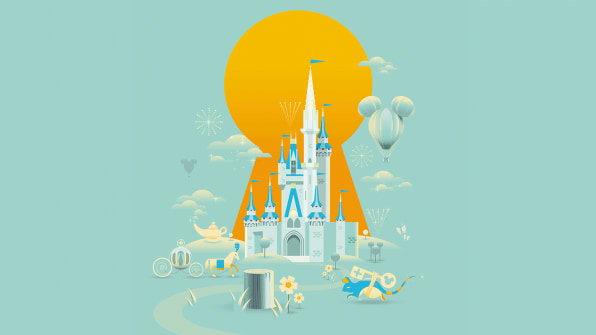
At Disney World, The Fun Never Stops
MyMagic+
Disney Next Generation Experience
Tom Staggs, the chairman of Walt Disney Company's Parks and Resorts division, says that the idea behind the company's new $1 billion MyMagic+ project "goes back, frankly, as far as Walt." Yet it's hard to imagine how Uncle Walt might feel if he watched a family of four stand up from the table at a Disney World restaurant and leave without paying a bill.
That's certainly how it would look at the Be Our Guest restaurant inside Disney's Magic Kingdom, an active MyMagic+ prototype. Customers settle themselves at a table and suddenly–without ever having picked up a menu or spoken with a waiter–their food arrives. At the end of the meal–without ever having looked at a bill or signed a credit-card receipt–they stand up and leave. Everything's taken care of, just like magic.
Behind the scenes, of course, it's more complicated: Before the group arrives at the restaurant, they've first made a reservation using the My Disney Experience app or website. Smart tables sense that they've arrived via the signal from their MagicBands–colorful, personalized smart bracelets that alert the kitchen to begin cooking the meals they preordered through the app. When it's time to leave, they tap their MagicBands at a touch point and enter a PIN number to pay. (No personal information is stored in the bands themselves.)
MyMagic+ shows up all over Disney's parks. It gets you onto rides via FastPass+, an upgraded version of the decade-old FastPass system that lets you prebook your rides. It unlocks your hotel room via the MagicBand. It helps you track down all of the characters you desperately want to see via the My Disney Experience app. Everyone has access to it (MagicBands are waterproof, and even little kids get one at check-in), and you can access it everywhere. It's a small world, by design.
The program, launched in March at Walt Disney World in Orlando, Florida, was conceived roughly four years ago. "Pretty much every part of our business was involved," says Staggs, from the Imagineers to the operations people to the food-and-beverage managers. Turnstiles at the entrances to the parks were exchanged for MagicBand touch points, meaning that the security plan had to change as well. Door locks were replaced; reservation systems were revamped.
Disney has already seen some tangible benefits–for example, FastPass+ now has 50% more participation from guests than the paper ticket FastPass, and wait times for park entry have decreased by 25%–but the program is still a work in progress (there have been at least 10 different versions of the app just since it launched). The development process was so long that several high-level execs departed before it was finished. Staggs, meanwhile, is starting to think about how the program might extend to Disney's other properties. "We're known for castles and teacups and cruise ships," he says. "But at the end of the day, we're in the experience business.".
Seat Yourself
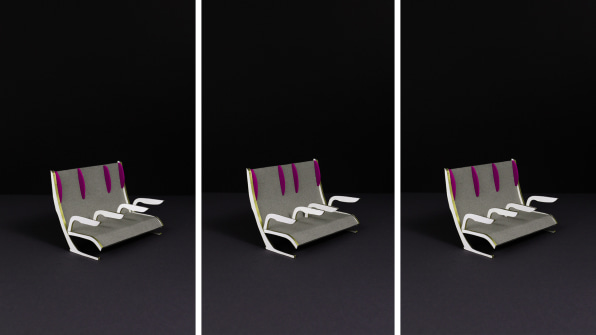
Seat Yourself
Morph
Seymourpowell
A concept airline seat, Morph replaces foam padding with the tensile Pellicle fabric used on the Herman Miller Aeron chair. Two pieces stretch across a standard 54-inch frame to make the seat and the backrest, and armrests slide into place to segment the frame into three individual zones. Morph is still in early-stage development, but if adopted widely, it could allow airlines to offer flexible ticket pricing depending on the size specified–parents could pay less for a small child's seat, for example, and a traveler who's not willing to pay for first class but still wants extra space could pay a bit more. Bonus: No padding means lighter-weight seats and more fuel-efficient planes.
Sending Packages Is No Longer A Hassle

Sending Packages Is No Longer A Hassle
Shyp
In college, Kevin Gibbon made hundreds of thousands of dollars selling stuff on eBay. He would have continued but for one agita-inducing logistical challenge: actually getting the items where they were going. After a decade in engineering jobs, Gibbon and cofounder Joshua Scott started Shyp, an iPhone app that has redesigned every point in the shipping process. "Sometimes when you create a company, there are people who don't understand it," Gibbon says. "But everybody has a story about the time they didn't ship something because it was just too much of a pain."
Scenario
Betsy has a baby blanket she knitted for her newborn niece in London and an espresso machine she bought online and wants to return to a retailer in Virginia. Both need to be mailed–but have been sitting by the front door for a week.

Old Way
- Betsy drives to Walgreens to purchase bubble wrap, packing tape, and cardboard boxes.
- Walgreens has a box that will fit the baby blanket but not one that will fit the espresso machine, so she makes a second trip, to Office Depot, to buy a larger box.
- Once she returns home, Betsy goes online to research shipping carriers and spends an hour trying to distinguish the difference between "priority" and "first class."
- Betsy packs the two boxes and drives to the UPS store, where she waits in line for half an hour. Four hours into the ordeal, she's wondering why she didn't order on Amazon.

New Way
- Betsy opens the Shyp app and takes photos of the blanket and the espresso machine. Then she types in the two mailing destinations and presses the pick up now button.
- Within 15 minutes, a Shyp driver arrives at her home and places each item in a Shyp microfiber bag labeled with a QR code, which contains the mailing addresses.
- Betsy gets a manicure while professional packers at Shyp's warehouse weigh the items, box them, and choose the most economical shipping carrier.
- Four hours later, relaxed and polished, Betsy pays the bill that Shyp has emailed to her (for the shipping charges plus the $5 fee) via her iPhone.
Everyone's A Storyteller
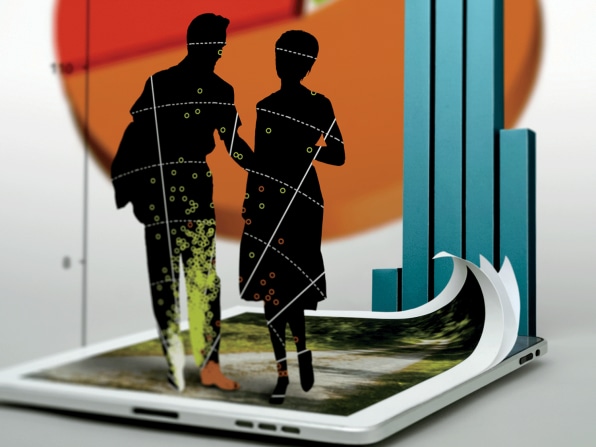
Everyone's A Storyteller
The creators of three new apps reveal the narratives behind their products.
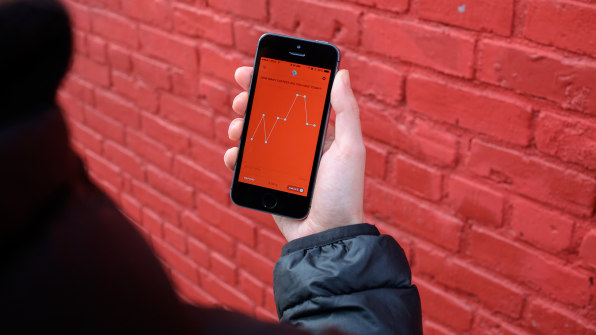
Reporter
Creates a self-portrait of your life by visualizing answers to daily quizzes about your location, habits, and more.
Nicholas Felton, cofounder:
"It's a product that came out of the annual reports I've been making for the past eight years. The annual report is this attempt to capture a year of my life through data. Rather than having to collect this stuff in an ongoing way, I just wanted something that would give me random alerts. Reporter opened up some new avenues of data collection for me–things that would be too burdensome to gather in a continuous manner, like my mood."
Plotagon
Brings screenplays to life almost as you write them, producing animated short films in seconds.
Jonathan Hise Kaldma, creative director:
"We wanted to make something that was approachable to someone who isn't technical but might just have a really good story to tell. It needed to have text as the interface, because text is the way humanity has been telling stories for thousands of years. We came up with the idea that you would write [the film] by choosing from lists of all the things that characters can do with each other, like kiss, hug, slap, and shake hands. It's a new way to tell stories. Instead of planning everything out in detail, you
can explore story ideas quickly and iterate on them."
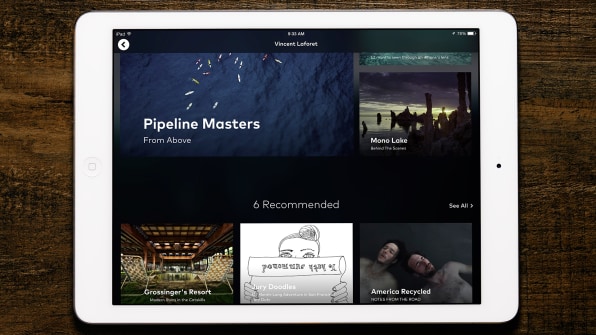
Storehouse
Merges your photos, video, and text into beautiful stories you can share.
Mark Kawan, cofounder:
"The world has gotten a lot more visual with everybody having a camera in their pocket. Storehouse is not only [a platform] to consume stories but also a way to create them directly on the iPad. As you're dragging images around, everything snaps to the grid. The average user doesn't really even think about, 'This is a design.' People are making editorial choices–that's what makes or breaks the story."
Sometimes A Car Is Not Just A Car
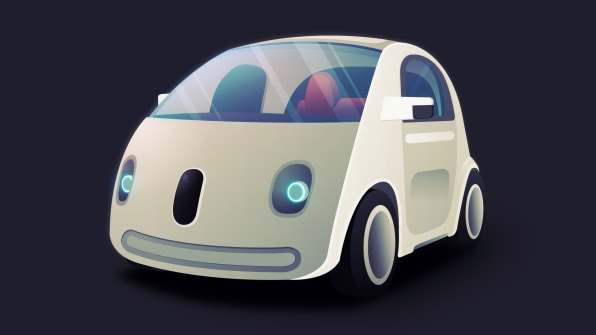
Sometimes A Car Is Not Just A Car
Why Google's self-driving vehicle changes everything.
When you've chronicled the tech business as long as I have, there's nothing better than those rare days when you stare the future in the face and realize that nothing will ever be the same. I experienced this feeling the first time I saw a web browser. I had it when I first held the iPhone. And I felt it again in late May of this year, when Google showed off its driverless car.
Seeing the vehicle, which resembles something between an old Volkswagen Bug and an electric golf cart, evoked that similar mix of elation, joy, nostalgia–and, yes, a bit of fear. Google's vision is typically audacious. What if society went from owning vehicles to renting on demand? And what happens if your vehicle becomes just another node on the network, where the cloud can provide intelligence and services? Like the iPhone, the Google car will reset our expectations for what a computer can be.
Read more
Design of Experiments May Be Used With Discrete
Source: https://www.fastcompany.com/90181633/design-is-changing-how-we-experience-2
0 Response to "Design of Experiments May Be Used With Discrete"
Post a Comment